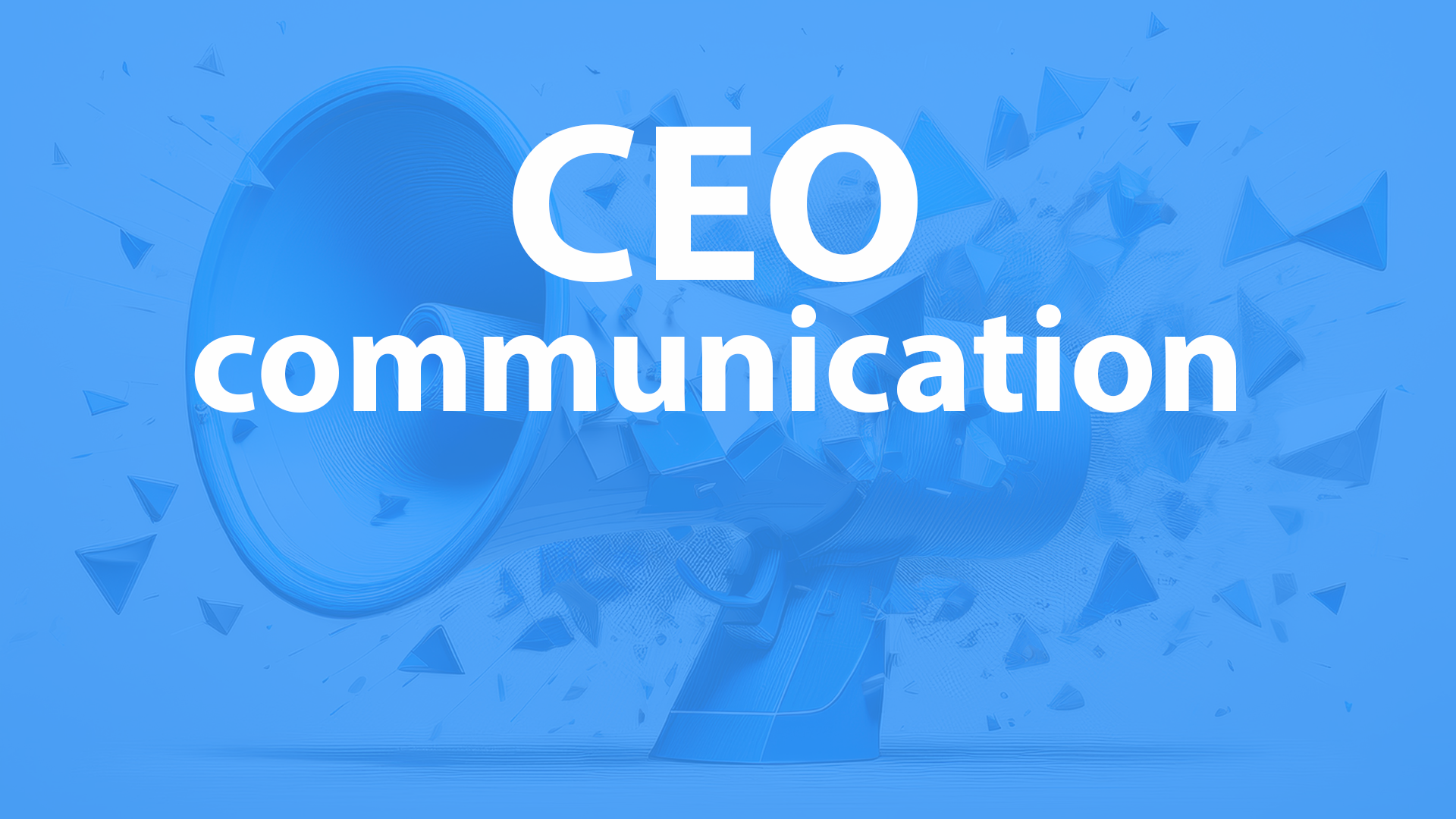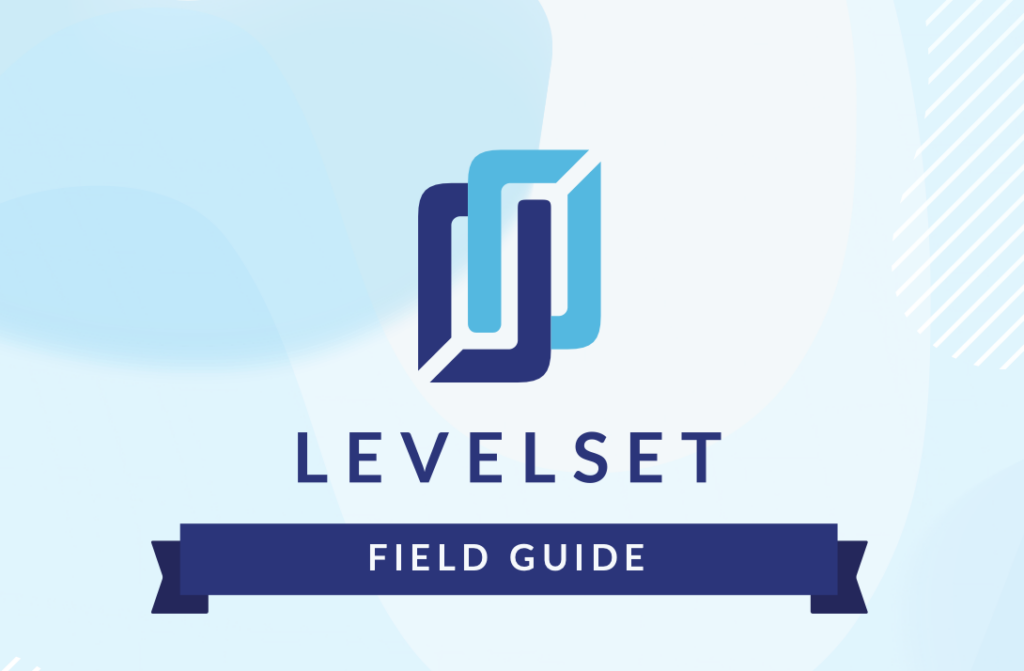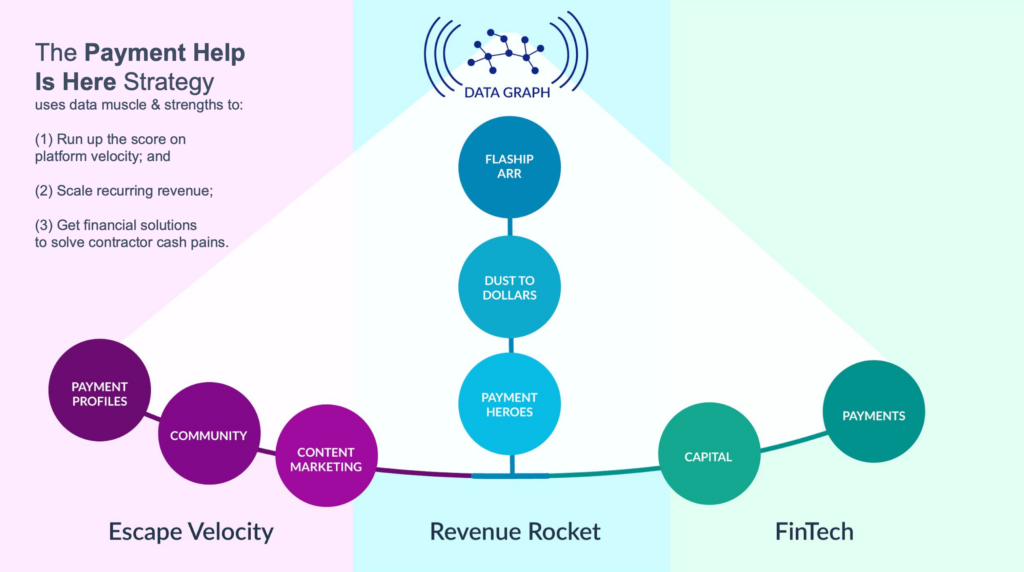How Leaders Create Believers

Is your message getting through?
Founders think leadership is about strategy, execution, hiring the right people, buzz, and a hundred other qualities; but great leaders know that leadership is about communication.
If you want to succeed, be ready to repeat a message that is cut, polished, set, and sized to fit.
At Levelset, once we figured this out, everything changed. We scaled past 400 people with a culture that fueled our performance. This article presents the Founders Communication Framework we used to build a high-performing team—not by pushing harder, but by marketing the vision from the inside out.
Leadership Is an Internal Marketing Job
When startups are new and the team is small, communication hurdles are low. Small teams are close-knit high-performing hustlers by nature because all the business’ core information fills the space like oxygen around a small group. They have “shared consciousness.”
Once the team size grows and crosses modest thresholds (30, 50+ people) communication hurdles compound and the group dynamics get complex.
This effect is labeled “Communication Network Theory,” which — like Reed’s Law for networks — observes that as group sizes increase, the number of potential communication channels grow exponentially.
To illustrate:
- Team of 2: 1 possible interaction (A-B)
- Team of 3: 3 possible interactions (A-B, A-C, B-C)
- Team of 4: 6 possible interactions (A-B, A-C, A-D, B-C, B-D, C-D)
- Team of 5: There are 26 possible interactions!
- Team of 50? Over 1,200!
And so on.
Very quickly, a startup can lose shared consciousness and find itself in communication chaos.
It’s no surprise that founders feel like their team just “doesn’t get it anymore.”
I had all of these feelings at Levelset as it crossed stages, growing from a team that fit around the conference table to a multinational group of over 400. And now, as advisor and director, I’ve seen founders struggle here.

The knee-jerk reaction is to crave more performance!
Everyone loves performance.
Boards pull out the McKinsey 9-Box Grid and push founders to “level-up” their teams. Founders tighten the screws on OKRs and “weed out the low performers,” and spend their crucial communication attention on “execute, execute, execute..
Alas, the problem isn’t because people aren’t working hard; they lack information! Founders think they are “transparent” and sharing all the information, but they are failing to communicate it.
What looks like an execution problem is actually an internal marketing problem.
The best leaders market their message inside their company, so the message becomes the “AIR” the team breathes:
- Articulate the core information to something simple & repeatable
- Instill it through rituals, repetition, and storytelling
- Reinforce it through systems and incentives
We figured this out at Levelset, cultivating a high-performance team to deliver a life and career changing outcome for hundreds.
We understood the communication hurdles. We knew success depending on delivering a message.
As Founder and CEO, my #1 job was clear to me: internal marketing.

Articulate The Core Messages
“Innovation is articulation,” observed Walter Isaacson in his study on innovation. The same can be said about leadership in general; it’s simply articulation.
Thus, the first element of the Founders Communication Framework is to articulate your company’s core information.
There are 3 ares of “Core Information.”
- Who You Are
- Your Behaviors
- Your Plan
Aim for high-level articulation in each of these areas. Not a research report, a paragraph, or a slide-deck with an avalanche of bullet points.
More like Southwest Airlines capturing their mission as “THE Low Fare Airline,” or Danny Meyer’s restaurant group capturing their behaviors and excellence standards as “Centering The Salt Shaker,” or Alan Mulally capturing his plan as the “One Ford” Plan.
This is a distillation journey.
It requires you to really, really understand your core information, and then to package it.
Who You Are Examples

At Levelset, we were big fans of Netflix’s Culture Deck and the Valve Handbook for New Employees. This inspired us to create our own tome about our company’s point of view, the Levelset Field Guide. The first line was “Why You’re Here,” and immediately it gave the readers the commanders intent: we empower people to always get what they earn.
This lived on everyone’s desk and in everyone’s heads. We communicated who we were, and had the core scripture in place to build upon.
Behavior Examples
It was always clear to me that “core values” were actions and not beliefs.
I love how Danny Meyers recounts his journey to understanding this. Meyers, the man behind Shake Shack and a pile of acclaimed New York restaurants like Gramercy Tavern and The Modern, banged his head against the wall in his early days, writing in Setting The Table that he couldn’t figure out how to get his “standards” met once he opened his second restaurant location. Things worked right when he was physically at one location, but suffered whenever he wasn’t there.
“The situation was my fault,” Meyers said in an interview, “because I had never clarified with words. I was doing it all, but I never clarified.”
Meyers needed to demand the next level of his expertise. The exquisite level.
Realizing that “language is the most revealing and powerful artifact of any culture,” Meyers realized he needed to distill his behaviors into words.
I presented to new Levelsetters on Day 1 explaining our shared behaviors through examples and storytelling, with me going through each behavior one-by-one, always stopping on the last identified behavior to call attention to the first word: Make.
“Notice anything about all these behaviors?” I’d ask the new hires.
“They all start with verbs,” I’d explain, “Create. Do. Start. Learn. Make. These are all actions.”
Words matter.
And these “core values” were not the only place we modeled behaviors. Inspired by Meyers, we also had internal management mantras and aphorisms. They were documented in our Field Guide as “Things We Say.” They were incorporated to the building as conference room names. They were on walls. They were on coffee mugs and swag.
Mantras like “We are all customer success, or “more comma more,” or “turkey popper problems.” These mantras were part of our shared language that “Sprinkled Scott Dust” across the team and shaped behaviors.
Plan Examples
Too often, I see leaders conflate their metrics and objectives with the notion of having and communicating a “plan.”
It’s not enough. And, in fact, it’s probably harmful.
No need to take this message from me. You can go straight to the horses mouth — to the OKR grand marshal himself, John Doerr, who wrote in his metrics manifesto Measure What Matters:
Leaders must get across the why…their people need more than milestones for motivation. They are thirsty for m meaning, to understand how their goals relate to the mission.
Leaders can make large teams (150+, 500+, etc.) feel like they are part of something. They do that through content and narrative.
“The Plan” for a business is not the metrics. It is not the quarterly objectives. It is not the three most important projects or customer accounts.
“The Plan” is the narrative.
The narrative explains in simple, memorable terms why your goals, metrics, and objectives matter in the larger scheme of things.
As the great turn-around CEO Greg Brenneman explains
If you require more than one page to lay out the key parts of your plan, then you’ll have almost no chance of actually executing it.
At Levelset, we distilled this into a 1-Page document called the “Payment Help is Here” plan.
The Plan segmented the business into neat divisions that were labeled and branded.
Yes, we literally branded our internal strategic pillars by giving them its own colors, logos, and swag. Every single person at Levelset knew where they fit into the broad “Plan.”

OKRs and metrics came and went within the Plan. We had a lot of “management.” We had lots of projects and experiments and priorities. But they were always discussed in the context of The Plan.
Other great examples of “Plan” narratives are:
- Alan Mulally’s “One Ford” plan
- Greg Brenneman’s Continental Airlines “Go Forward” plan
Instill with Rituals & Repetition
Just like a preacher or a congregation leader, there is discipline and craft in preaching a message. Or, as Patrick Lencioni wrote in his terrific book on this topic, The Advantage, “great leaders see themselves as Chief Reminding Officers as much as anything else.”
To create an engaged, high-performing team, leaders must establish rituals and rhythms.
These are not meetings with productivity-based agendas, crafted to be as short and infrequent as possible’s and always having next steps.
No, these rhythms are more like going to church.
They are shared gatherings or communication moments that pull believers together and remind them of the core information (mission, behaviors, plan).
At Levelset, our rhythms included:
- Weekly CEO Email or Slack Message
- Recurring All Hands (weekly, or monthly, depending on team size)
- Quarterly and Annual Themed All-Hands
Did it feel repetitive?
Eventually, yes, things felt repetitive.
Actually, some of the longest serving Levelsetters could just take the reins from me and run the whole communications show if I disappeared for a few weeks.
But that was the feature of the system. The holy grail.
As Daniel Coyle noticed in his research for The Culture Code, “what seems like repetition is, in fact, navigation.”
And here are some key things to keep in mind about your rhythms:
The Magic Number 7
In advertising, messages should be short to be remembered (as little as 3-5 words). And it’s marketing 101 that messages get through only after being repeated many times in many different formats (visual, auditory, kinesthetic), with 7 being the magic repetition number.
So, abide by this.
Repeat your core information often and leverage different formats.
Frame Everything Around Your Plan
Greg Brenneman framed everything around his Go Forward Plan at Continental (now United) Airlines:
Every time you speak, you talk about the Go Forward Plan, over and over and over again. Do it until you think everyone gets it, and then do it a thousand times more. Drive it into the organization with a jackhammer. Ask them to repeat it back to you in casual conversations.
Too many founders orient their rhythms around their company’s departments. It’ll be the sales update, the product update, the finance update, etc. What exactly are they wanting people to remember?
Everything needs to be oriented around your plan.
NFL coaches are terrific at this. A few years ago, I was invited to the owner’s suite at the New Orleans Saints game, and general manager Mickey Loomis talked to the group before the game. He said, “today, the Keys to Victory are to win the offensive line battle, get over 100 yards rushing, and win the turnover battle.”
I promise you that Sean Payton’s all team meetings and updates that week were not “the Offensive Coordinator Update” and “Special Teams Update.” The message was “These are the 3 Keys to Victory.” Over and over again.
Names, Names, Names
Everyone understands the power of recognition. Communities pay attention to people in their community. I love the story about Hoover Adams, who founded a local newspaper in Dunn, North Carolina, called the Daily Record. Told in Made to Stick:
I bet if the Daily Record reprinted the entire Dunn telephone directory tonight, half the people would sit down and check to be sure their name was included…when someone tells you, ‘aw, you don’t want all those names,’ please assure them that’s exactly what we want, most of all!
Adams created a shorthand for his commander’s intent: “Names, Names, Names.”
I stole these words, making them instructions to our People Operations team.
We weaved names into all of our rhythms and messages.
When we had something to say about our mission, our behaviors, or our plans, we said it by using a name, showing that person as an example.
Reinforce Through Designed Systems
Go beyond just repeating your core information…design systems throughout the company that reinforces and repeats the core information for you.
This creates a culture flywheel that regenerates its own energy.
Here’s how.
Unleash Your Herd
Scott Abel was a mentor of mine and Levelset board director, and I’d often lean on him to talk about people operations and culture building. His company, Spiceworks, had a dynamic, talent-magnet culture that he credits to Jen Slaski.
Who is Jen Slaski?
Jen wasn’t a Human Resources hire, a communications hire, or an executive assistant hire — she was the company’s first marketing hire. And because Scott spotted her as a culture torchbearer and empowered her, she becomes a crucial part of “cultivating” the Spiceworks team.
“We’re able to try things and see what happens,” says Jen in an interview on the culture, “the leadership team…unleashed everyone to use their creativity and passion to shake things up.”
Jen was a spreader.
Danny Meyers curated people like this, too, who he called “culture carriers.”
Professional sports organizations are amazing at this by leveraging the power of “team captains.”
At Levelset, we pulled language from Chris Zook’s book The Founders Mentality:
Every company can identify some employees, not necessarily department heads or people with big titles, who have a disproportionate impact on the performance of the company and its delivery to customers. We call these employee’s “franchise players.”
We anointed some of our team members “franchise players,” and unleashed them as culture carriers. They self-organized. They met. They put their ear to the ground to listen to the team. And they were models to everyone else to reinforce our culture.
Use Perks to Reinforce Behaviors
“Culture” can be a vastly misunderstood concept, and I always had strong distaste for corporate extravagances and perks thrown at employees that — I felt — was nutritionally bankrupt. This was prolific in the early Google and Facebook days. People would sometimes suggest this stuff to me and I’d usually dismiss it, calling it “ping pong management.”
Culture is more true to the etymology of the word. The word comes from the latin “cultura,” which means to “cultivate.”
And when it came to spending resources on “perks” and benefits, we didn’t want culture junk food, we wanted perks to reinforce and cultivate our culture.
For example, two of our most talked about and meaningful benefits revolved around and reinforced one of our core values, “Learn Enough.”
We bought unlimited books for our team members about anything as long as they passed along “what they learned” to others in a Slack message, and every employee got an international travel stipend they could use annually toward international travel.
Make Core Measurables Tangible Messages
In college, I got my private pilot’s license, and remember clearly a key milestone during my training: my first solo flight.
It’s scary. I touched down after my flight, got congratulated by my instructor, and then cut off the tail of my shirt to hang on the flight school’s wall, and it got stapled on the wall with hundreds of others.
Before my tail went on the wall, the other tails were up there reminding me of two very important things: that this was an important milestone I needed to reach, and I could do it because many others had done it.
This is a brilliant cultural reinforcement tool. We’d leverage this concept at Levelset, designing reinforcing systems like this to power a culture flywheel. Here are some examples.
The Taylor Wall

“Wow’ing” customers was a key behavior so we obsessively counted new 5 Star reviews. Every time we got a review we rang a bell and the person who sourced the review posted a “Taylor Swift” poster on the wall. This started because we “unleashed” our support manager Julie Leveque, a Swiftie. And this wall became famous. And our 5-Star reviews came in every day.
Closers Get Bats

Martin Roth, Levelset’s CRO, watched the Taylor Wall reinforce behaviors and created his own version. In Martin’s early selling days he took sales calls holding a baseball bat, and he turned this into a tradition. Every time a new sales person hit their first $100k in bookings, they received a custom bat with their name on it in a “Bat Ceremony.” The bats got lined up on the walls of the sales room in New Orleans and Austin.
The Chief Marketeer
Great startup teams are not divine talents with supernatural “self motivation.” They just have extraordinary information and contextual symmetry.
Small teams share history and feel like they belong to something together. They know the mission and point of view intimately. They are creating the team’s unique behavior profile. And the Plan is etched into their day-to-day minds.
When teams grow, they hit a communications wall.
Searching for the “high performers” and “self motivated” is a quest for fool’s gold.
Focus instead on communicating context. Articulate your key information, instill it through repetition, and reinforce it with systems and flywheels. Be great at your #1 job: being the chief marketeer.